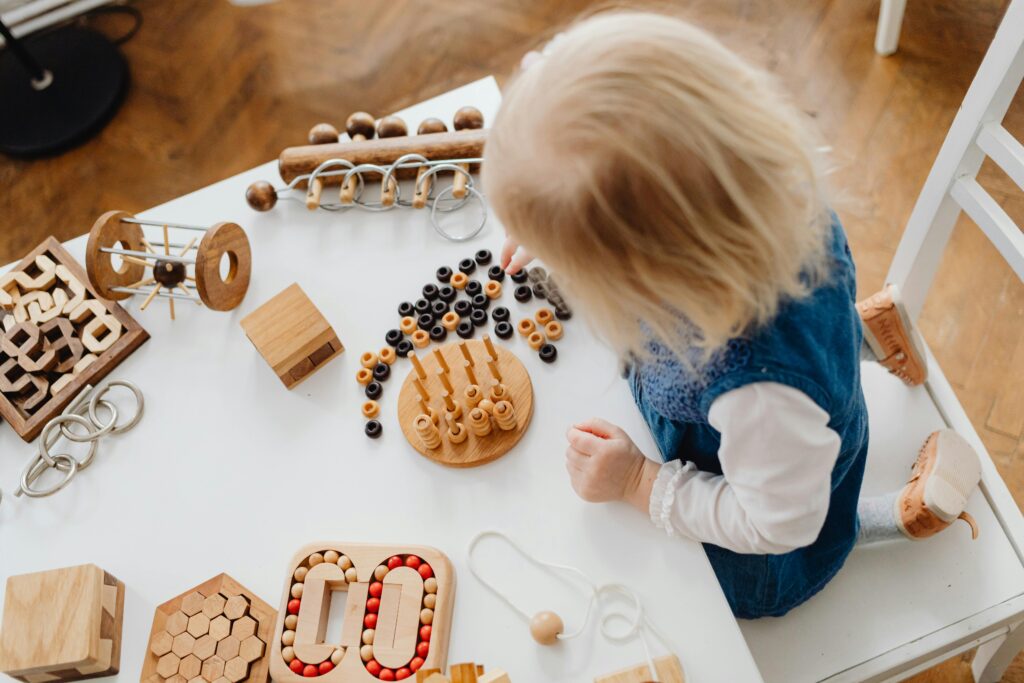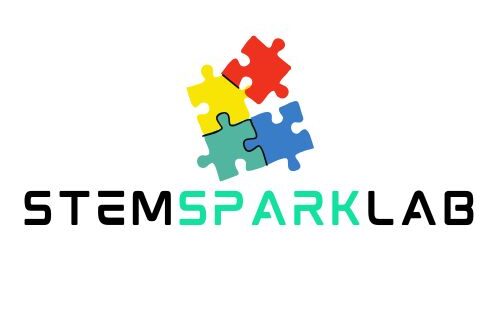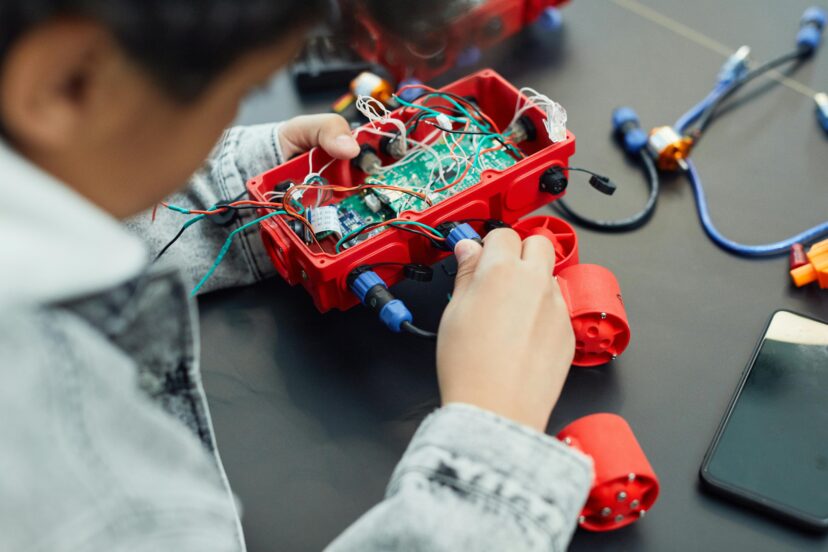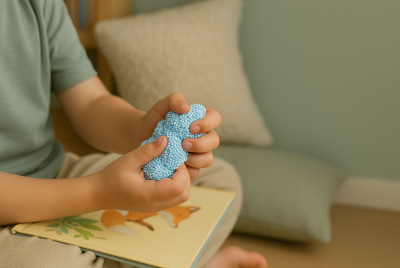STEM Toys for Preschoolers: Turning Playtime into a Learning Adventure
We may earn a commission for purchases made using our links. Please see our disclosure to learn more.
Preschoolers are natural scientists, as you can see if you’ve ever watched them in action. They continually experiment with their surroundings by poking, stacking, pouring, and mixing. For this reason, STEM (Science, Technology, Engineering, and Math) toys are innovative. They transform that innate interest into a practical educational opportunity. But how can you pick the best options when there are so many available? Let us examine the reasons behind the high value of STEM toys, what to look for, and which ones will delight your child.
What Makes STEM Toys Vital for Young Children?
Children solve problems from birth. When a toddler tries to fit a square block into a round hole, they will attempt every potential fit before realizing it isn’t possible. STEM education in action! These toys foster creativity, foster critical thinking, and promote trial and error—the foundation of science. Additionally, they turn learning into play, which is how preschoolers acquire new ideas the best.
How Do STEM Toys Benefit Early Childhood Development?
A child’s brain absorbs all of the information from their surroundings, much like a tiny sponge. Making the most of this is made possible by STEM toys, which improve hand-eye coordination, cognitive abilities, and even social skills when used in group play. Have you ever seen how children smile proudly after completing a puzzle or building a towering tower? That is self-assurance blossoming before your very eyes! They gain independence and a lifelong passion of solving problems thanks to these toys.

What to Look for in STEM Toys for Preschoolers?
Not all toys labeled “STEM” are actually great for preschoolers. Some are too complex, while others don’t hold a child’s interest for long. When shopping, keep a few things in mind:
✔ Is it age-appropriate? You want something that challenges them but isn’t frustrating.
✔ Is it hands-on? Preschoolers learn best by touching, moving, and building.
✔ Does it allow open-ended play? The best toys let kids explore and create in their own way.
✔ Is it safe? No tiny pieces that can become a choking hazard, and materials should be non-toxic.
A good rule of thumb? If a toy makes you want to sit down and play with it too, it’s probably a winner.
Best Types of STEM Toys for Preschoolers
1. Building Blocks and Construction Sets
Ah, the good old building blocks—possibly the best STEM toy of all time. Whether it’s wooden blocks, magnetic tiles, or interlocking bricks, these toys teach the basics of engineering and spatial awareness. Kids learn balance, structure, and patience (especially when that masterpiece comes crashing down). Plus, have you ever stepped on one in the middle of the night? That’s proof they’re built to last!
2. Simple Science Kits
Science experiments aren’t just for older kids—there are plenty of simple kits designed for preschoolers. Think color-mixing activities, baking soda volcanoes, or growing tiny crystals. These kits spark curiosity and make kids feel like little scientists. Plus, let’s be honest, there’s something magical about watching baking soda and vinegar bubble up like a tiny explosion!
3. Coding Toys Without Screens
You don’t need a computer to introduce kids to coding concepts. Toys like coding caterpillars or sequencing games teach them the basics of logical thinking and problem-solving. Instead of tapping on a screen, they physically move pieces around to see cause-and-effect in action. It’s like sneaking in a computer science lesson without them even realizing it!
4. Puzzle and Matching Games
Puzzles are like tiny brain workouts for kids. Matching colors, fitting shapes, or figuring out number patterns all help preschoolers develop early math and problem-solving skills. And there’s nothing more satisfying than that “aha!” moment when they finally get the last piece in place. It’s a small victory, but a big step in learning how to tackle challenges.
5. Engineering Playsets
Ever watched a kid play with gears or simple pulleys? It’s fascinating to see how quickly they pick up on mechanical concepts. These toys teach kids how things work in a hands-on way. Before you know it, they’ll be figuring out how to fix things around the house (or at least taking their toys apart to see what’s inside!).
6. Nature Exploration Kits
STEM learning doesn’t have to happen indoors. Bug-catching kits, plant-growing sets, and magnifying glasses make the backyard feel like a science lab. If your child loves playing in the dirt (and let’s be real, most do), these kits turn that curiosity into an early love of biology. Who knows? You might even raise a future botanist!
7. Math and Counting Games
Math can feel overwhelming to little kids, but the right toys make it fun. Counting bears, sorting cups, and number puzzles help preschoolers recognize patterns and numbers without feeling like they’re learning. It’s sneaky education at its best!
8. Magnetic Science Toys
There’s something about magnets that fascinates kids. Whether it’s magnetic rods, building sets, or simple wands, these toys introduce basic physics concepts in a hands-on way. Watching magnets repel or attract each other feels like magic—until they realize it’s actually science!
9. Cause-and-Effect Toys
Toys that make things happen—like marble runs, kinetic sand, or simple machines—are perfect for STEM learning. Kids get to experiment with motion, gravity, and problem-solving. Ever watched a preschooler build a domino chain? They learn through trial and error, and when it finally works, they get that huge sense of accomplishment.
10. Musical STEM Toys
Music and math go hand in hand, which is why musical STEM toys are great for preschoolers. Xylophones, keyboards, and rhythm-based games help with pattern recognition and sequencing. Plus, music is just plain fun—and let’s be honest, anything that keeps them entertained for more than five minutes is a win!
How to Make STEM Toys Even More Effective?
A toy alone won’t magically turn a child into a genius. Here are some simple ways to make playtime more educational:
- Ask questions. Instead of telling them what to do, ask, “What do you think will happen if we do this?”
- Encourage mistakes. STEM learning is all about trial and error. Let them figure things out on their own.
- Join in! Playing together helps kids learn even faster. Plus, it’s a great excuse to act like a kid again.
- Turn everyday moments into learning. Cooking, sorting laundry, or stacking cups can all reinforce STEM skills.
The Impact of STEM Toys on Early Childhood Learning
Scientific research supports the idea that STEM toys play a crucial role in early childhood development. A study titled “Toys for children with the concept of STEM: study of the result from children’s playing activities” found that STEM-based toys significantly enhance problem-solving skills and cognitive development in children aged five to seven. The study highlighted that both children and parents reported high levels of engagement and satisfaction, reinforcing the idea that STEM toys are effective educational tools. Similarly, an article from Live Science explored whether STEM toys truly teach science and math. The research concluded that open-ended, hands-on toys, such as building blocks and engineering kits, successfully introduce fundamental STEM concepts to preschoolers. These findings emphasize the importance of selecting toys that encourage exploration, creativity, and logical thinking, laying a strong foundation for future learning.

Top STEM Learning Products Available on Amazon
Exploring STEM (Science, Technology, Engineering, and Mathematics) through play can ignite a child’s curiosity and foster a love for learning. Here are some highly-rated STEM toys available on Amazon that can make learning both fun and educational:
Botley the Coding Robot 2.0 Activity Set
This screen-free coding robot introduces children to the fundamentals of coding through interactive play. Botley can detect objects, follow looping commands, and navigate obstacle courses, making coding tangible and fun.
Osmo – Little Genius Starter Kit for iPad
Combining physical play with digital interaction, this kit offers hands-on learning games that teach letter formation, phonics, and problem-solving skills. It’s designed to adapt to a child’s skill level, providing a personalized learning experience.
K’NEX 100 Model Building Set
Encouraging engineering and architectural skills, this building set allows children to construct a wide variety of models, from simple structures to complex machines. It promotes spatial awareness and creativity through hands-on building.
Green Toys Build-a-Bouquet Floral Arrangement Playset
This eco-friendly playset lets children design and build their own floral arrangements, teaching them about parts of a plant and encouraging creativity. It’s a great way to introduce basic concepts of botany and design.
ThinkFun Robot Turtles Coding Board Game
Designed to teach the basics of programming, this board game has players write programs with playing cards to move their turtles through a maze. It’s a fun, interactive way to introduce coding concepts to young learners.
Final Thoughts
STEM toys aren’t just toys—they’re little tools that help kids develop problem-solving skills, creativity, and confidence. Whether your preschooler loves to build, explore, or tinker, there’s a STEM toy out there for them. The best part? They’ll be learning without even realizing it.
So, next time you’re picking out a toy, think beyond the usual stuffed animals and dolls. Choose something that challenges their brain, sparks curiosity, and maybe even gets you a little excited to play along. After all, learning is a lifelong adventure, and it starts with play!
FAQs About STEM Toys for Preschoolers
1. What age should I start introducing STEM toys?
As early as possible! Even simple stacking blocks and sensory toys introduce STEM concepts to toddlers.
2. Are STEM toys just for kids who like science?
Not at all! STEM toys help with creativity, problem-solving, and logical thinking—skills that benefit every child.
3. How do I know if a toy is really STEM-based?
Look for toys that encourage exploration, problem-solving, and hands-on play. If it makes kids ask “Why?” or “What happens if…?” it’s probably a good STEM toy.
4. Do STEM toys replace regular toys?
Nope! They just add an extra layer of learning to playtime. It’s all about balance.
5. Can STEM toys help my child with social skills?
Definitely! Many STEM toys involve teamwork, cooperation, and communication, which are just as important as math and science skills.




